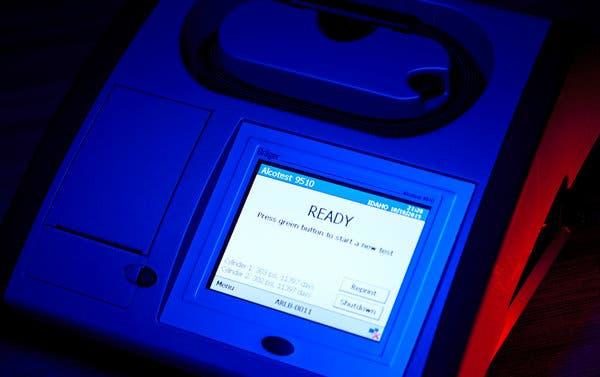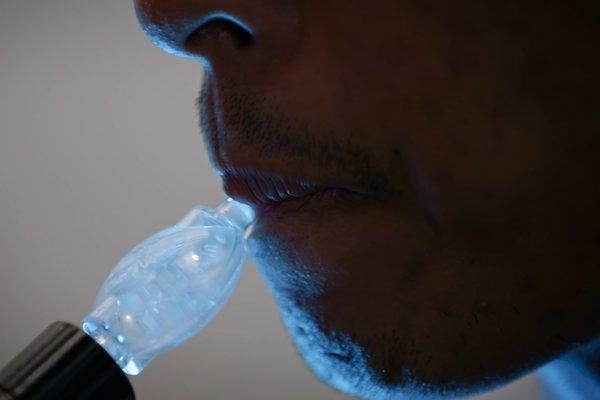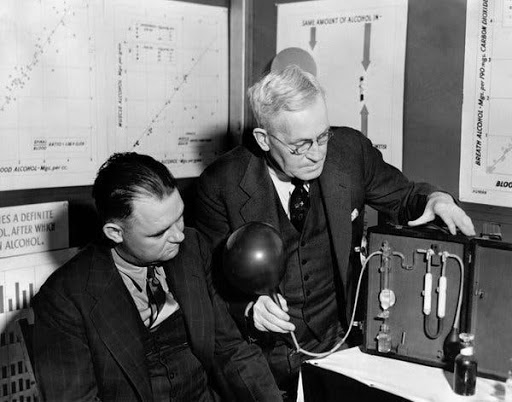BLOG
Rise of the Machines
Alcohol breath tests are something that the criminal justice system in Canada relies on as being a reliable source of scientific measurement of an accused person’s blood/alcohol content. If it is established that the instrument was in proper working operating order, the blood alcohol content reading at the time of reading is conclusive proof at trial. Parliament (who are not known to be a scientific body) have determined that if the device analyzes blank air and the standard alcohol solution before each sample is taken, it is not scientifically possible for the device to produce inaccurate readings in the analysis of the accused’s breath.
However, a bombshell New York Times investigation revealed that machines used by our American counterparts, were unreliable and increasingly drew skepticism from judges.

The Dräger Alcotest (seen here) and similar devices from other manufacturers are found in police stations across the United States.
Over a million Americans a year are arrested for drunk driving, their blood/alcohol content (BAC) determined by blowing into a straw connected to a computer that contains a small laboratory that instantly produces a “scientific” reading. But these tests, have been shown to be often highly unreliable resulting in countless wrongful convictions. An investigation by the New York Times, found that many of the devices found in police stations across America, generate skewed results with incredible frequency, even though they are marketed as having precise readings, down to the decimal.
In New Jersey and Massachusetts, judges have thrown out more than 30,000 breath tests in the last 12 months alone, due to human error and lax government oversight. Across America, thousands of other tests have been invalidated.
Intoxylzer devices are highly sensitive scientific machines that were found to have not been properly maintained or calibrated in many cases, giving results that were up to 40 times too high. Maintenance of the devices is up to the individual police departments and, like in Canada, utilise inexperienced or improperly trained officers. In one disturbing case from Massachusetts, police utilised a machine that housed a family of rats. Thankfully Alberta is proudly rate-free so this will likely not happen here.
It was found during the investigation that technical experts found serious programming mistakes in the device’s software. States were also found to have used devices that their own experts didn’t trust and have disabled safeguards meant to ensure accuracy.
The New York Times interviewed more than 100 lawyers, scientists, executives and police officers and reviewed tens of thousands of pages of court records, corporate filings, confidential emails and contracts. Together, they reveal the depth of a nationwide problem that has attracted only sporadic attention.
A Pennsylvania judge called it “extremely questionable” whether any of the state’s breath tests could withstand scrutiny. In Florida, a panel of judges described their state’s devices as a “magic black box” with “significant and continued anomalies.”
John Fusco, who ran National Patent Analytical Systems, a maker of breath-testing devices, said the devices were never meant to be used as de facto arbiters of guilt. Yet here we are. Take the test, blow in the device or be prosecuted for refusal. Despite serious concerns, these devices are considered by most judges as the Gospel. The consequences of the legal system’s reliance on these unreliable tests are far reaching and have incredible impacts on people’s lives. Countless people are wrongfully convicted based only on the results of these machines, most of whom were never aware that the foundation of their conviction was based on faulty tests.
42,000 Convictions At Risk
State records show that nearly 29,000 of the invalidated tests in Massachusetts were already used to convict drivers. This is without a doubt, the largest mass group of wrongly-convicted in the history of the United States. This month, the state will begin to contact those wrongly convicted, who have already suffered the consequences, to inform them that they can seek a new trial.
In New Jersey, more than 13,000 people were found guilty based on breath machines that hadn’t been properly set-up.
Between those two states alone, at least 42,000 convictions are at risk. Thousands of other defendants have already been acquitted in cases that prosecutors believe would have been won if they had been able to rely on the use of the machines.
In Minnesota, a judge found that the state’s machines appeared to be rounding up results, falsely putting some defendants over the legal limit.

The Drunkometer
Attempts to prevent drunk driving predate the modern automobile. In the late 19th century, Britain outlawed being drunk while operating a carriage, horse, cattle or steam engine. In 1897, a London taxi driver named George Smith crashed his electric tax, admitted to consuming two or three beers and was fined 20 shillings. This is purportedly the first arrest for drunk driving.
Near the end of Prohibition, a biochemist invented a suitcase-sized machine with vials of chemicals and a balloon to blow into. Alcohol in the driver’s breath would trigger a reaction: the drunker the driver, the deeper the chemicals’ color. It was called the Drunkometer. But it was bulky and hard to use.

Two decades later, a police photographer and amateur chemist named Robert Borkenstein developed a similar but more portable machine. He named it the Breathalyzer.
Police departments around the country bought Mr. Borkenstein’s invention and versions developed by competitors. Then, in 1980, a fatal collision led to an overhaul of America’s drunken driving laws — and a sales boom for companies that made breath-testing devices.
Cory Wilson is a criminal defence lawyer based in Calgary. If you have been charged with a criminal offence or are a suspect in a criminal investigation, call today for a free, no obligation consultation.